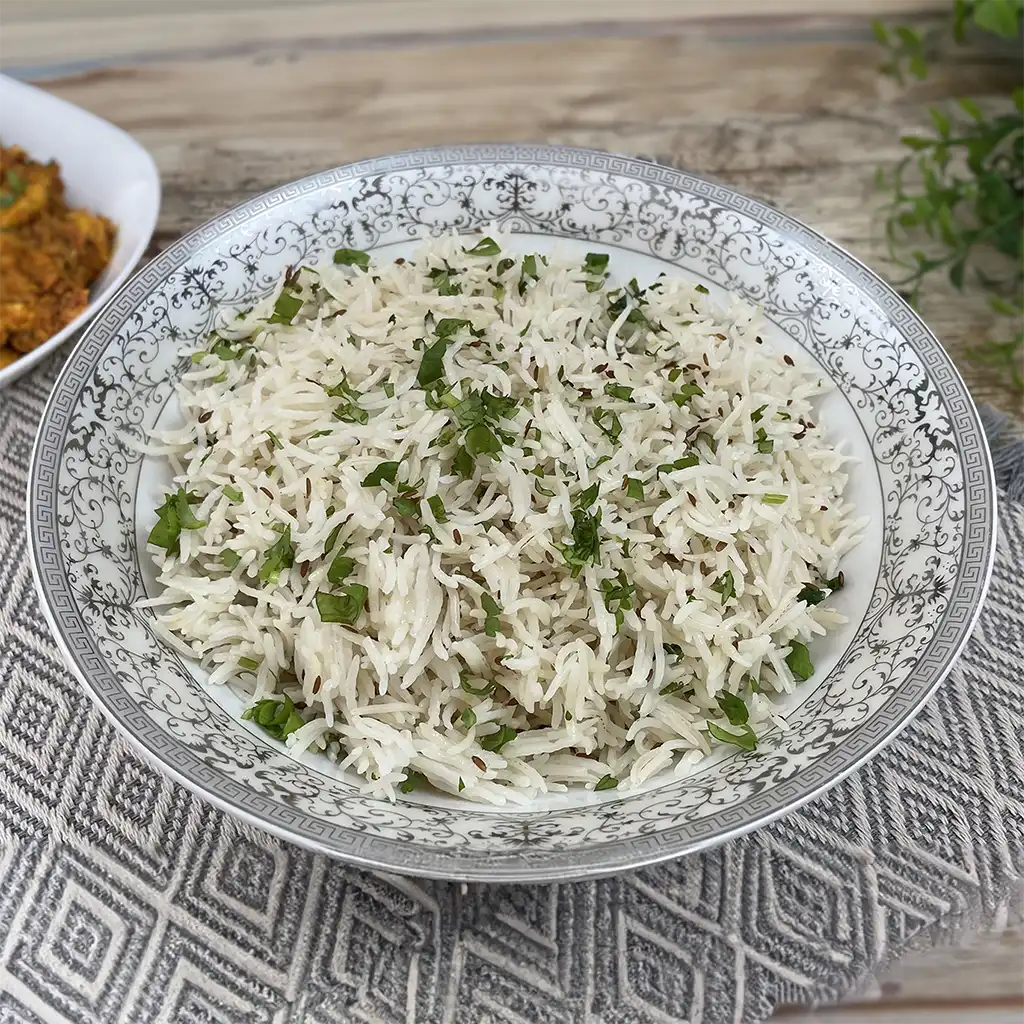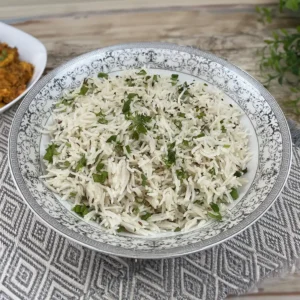
Jeera rice, a fragrant and flavorful dish, is a staple in Indian cuisine that perfectly complements a wide array of dishes, from spicy curries to creamy lentils.
Originating from the northern regions of India, this dish derives its name from the Hindi word “jeera,” which translates to “cumin seeds” in English. These tiny seeds are the star ingredient of this dish, infusing the rice with their distinct earthy and nutty flavor.
Despite its rich history, jeera rice is surprisingly easy to prepare, making it an ideal choice for both beginner and seasoned cooks alike.
The recipe calls for simple ingredients that you can easily find in your pantry, such as fragrant basmati rice, aromatic whole spices like bay leaf, black cardamom, and cinnamon stick, and of course, cumin seeds.
Expert Tip: When sautéing the whole spices in oil, make sure not to burn them. Keep the heat on medium-low and stir continuously until they become fragrant to release their flavors without scorching.
Rice Basmati: Basmati rice is the perfect choice for jeera rice due to its long grains and delicate flavor. When cooked, basmati rice becomes fluffy and aromatic, adding a light and fragrant base to the dish.
Bay Leaf: Bay leaves impart a subtle, earthy flavor to the rice, enhancing its overall aroma and taste. They are commonly used in Indian cooking to add depth to savory dishes.
Black Cardamom: Black cardamom pods have a smoky and slightly mentholated flavor that adds complexity to the jeera rice. These pods are larger and darker than green cardamom and provide a unique and bold taste.
Cinnamon Stick: Cinnamon adds a warm and sweet aroma to the rice, balancing the earthiness of the cumin seeds and the smokiness of the black cardamom. It lends a hint of sweetness without overpowering the dish.
Oil: Oil is used for sautéing the whole spices and rice, ensuring that they are evenly coated and toasted. Any neutral oil, such as vegetable or canola oil, works well in this recipe.
Salt: Salt enhances the flavors of the dish and helps to season the rice as it cooks. Adjust the amount of salt according to your taste preferences.
Cumin Seeds: Cumin seeds are the star ingredient of jeera rice, infusing the dish with their distinct nutty and earthy flavor. They are toasted in oil to release their aroma and impart their delicious taste to the rice.
Coriander: Fresh coriander leaves are added at the end of cooking to provide a burst of freshness and color to the dish. They complement the warm spices and add a vibrant touch to the finished jeera rice.
Expert Tip: Soaking the rice for at least 30 minutes before cooking helps to ensure even cooking and results in fluffy grains.
Expert Tip: Rinse the basmati rice thoroughly until the water runs clear to remove excess starch, which helps prevent the rice from becoming sticky when cooked.
Yes, you can use other types of rice if you don’t have basmati available. However, basmati rice is preferred for its long grains and fragrant aroma, which enhances the overall flavor of jeera rice.
Soaking the rice helps to ensure even cooking and fluffier texture. It also reduces the cooking time. If you’re short on time, you can skip soaking, but the texture of the rice may not be as optimal.
If you don’t have all the whole spices listed, you can still make jeera rice with just cumin seeds. However, using a combination of spices adds depth of flavor to the dish. Feel free to adjust the spices according to your preference.
Make sure to use a non-stick pan or a well-seasoned cast iron skillet to prevent the rice from sticking. You can also add a bit more oil or ghee to the pan if needed.
Yes, you can make jeera rice in advance and store it in an airtight container in the refrigerator for up to 3-4 days. Reheat it in the microwave or on the stovetop with a splash of water to refresh the texture before serving.
Here are some more recipes for you to enjoy! If you my recipes don’t forget to rate and leave a comment.
If you have any recipe suggestions, please do not hesitate to ask me. A great way to stay in contact with me is through Instagram, Facebook, Twitter and YouTube. Don’t forget to tag me @CookwithNabeela in your recipe photos!

Subscribe now to receive my latest recipes directly in your inbox. Stay up-to-date and never miss out!

I love to cook! I want to share with you my favourite, delicious family-friendly recipes. I want to inspire you to create fantastic food for your family every day.
Add your first comment to this post